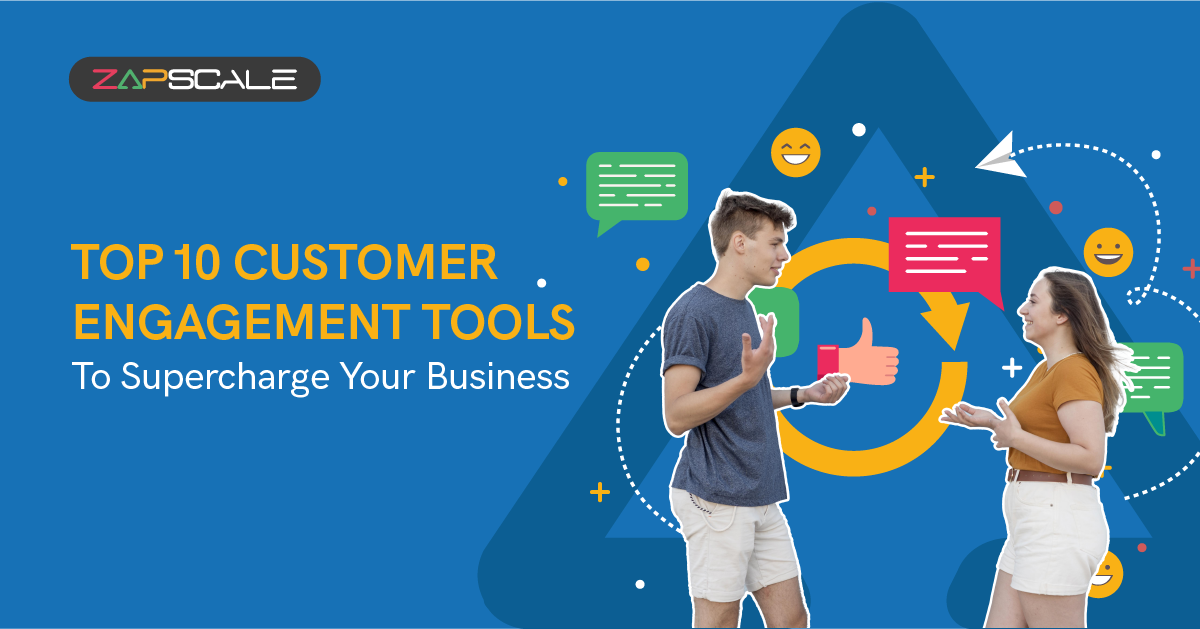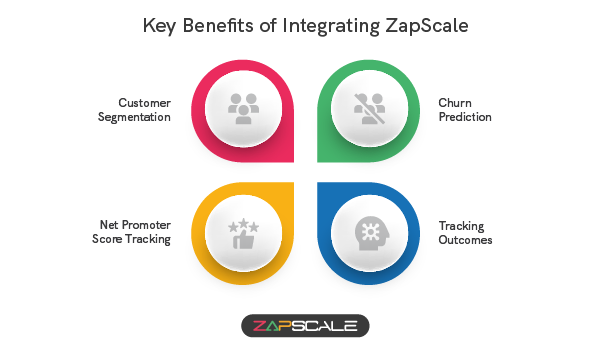CATEGORY > Customer Engagement
Top 10 Customer Engagement Tools to Supercharge Your Business

Customer loyalty is no longer optional in today's competitive market. Businesses that excel at customer engagement not only retain existing customers but also turn them into brand advocates. However, achieving this level of engagement requires a strategic approach and the right tools in your arsenal.
This article explores the top 10 customer engagement tools that can help you build stronger customer relationships, drive product adoption, and ultimately boost your bottom line.
1. Help Scout: The All-in-One Champion for Customer Service
Imagine a central hub for all your customer interactions, streamlining communication and simplifying support. Help Scout offers exactly that, combining features like live chat, email ticketing, and a self-service knowledge base.
Key Benefits
- Centralized communication: Respond to customer inquiries through various channels within a single platform.
- Improved efficiency: Automate repetitive tasks and resolve issues faster.
- Empowered customers: Offer a comprehensive knowledge base for self-service and empower customers to find solutions independently.
Who should use it? Businesses of all sizes looking for a one-stop solution for managing customer communication and support.
2. Intercom: Building Relationships Through Conversational Communication
Intercom goes beyond basic support, fostering deeper connections throughout the customer journey.
Key Benefits
- Personalized engagement: Tailor communication based on user behavior and needs.
- Proactive outreach: Initiate conversations with website visitors and answer questions before they arise.
- Product adoption: Guide customers through your product with interactive product tours and tooltips.
Who should use it? Businesses focused on building strong customer relationships and driving product adoption.
3. Drift: Turning Website Visitors into Loyal Customers
Drift focuses on the power of conversation to convert website visitors into leads and ultimately, loyal customers. Its conversational marketing platform offers features like live chat, chatbots, and email marketing automation.
Key Benefits
- Qualify leads in real-time: Engage website visitors proactively and identify potential customers with high buying intent.
- Personalized conversations: Leverage chatbots to answer basic questions and route complex inquiries to human agents.
- Nurturing leads: Automate email follow-ups and nurture leads throughout the sales funnel.
Who should use it? Businesses aiming to generate leads, improve website conversion rates, and personalize the customer journey.
4. Userpilot: Onboarding New Users with Confidence
Onboarding new users seamlessly is crucial for maximizing product adoption and retention.
Userpilot is a user onboarding platform that simplifies this process, offering features like product tours, tooltips, and checklists.
Key Benefits
- Reduce friction: Guide new users through your product's features and functionalities with interactive product tours and in-app guidance.
- Improved product adoption: Ensure users understand the value proposition of your product, increasing their chances of becoming successful users.
- Reduced churn: By proactively addressing user confusion and roadblocks, Userpilot helps minimize the risk of customer churn.
Who should use it? SaaS companies and businesses with complex products that require user onboarding and training.
5. Hotjar: Understanding How Users Interact with Your Website
Hotjar is a website behavior analytics tool that helps you understand how customers interact with your website, providing valuable insights to optimize your engagement strategy.
Key Benefits
- Heatmaps: Visualize where customers click and scroll on your website, identifying areas of high engagement and areas for improvement.
- Session recordings: Replay user sessions to see how they navigate your website and identify potential pain points.
- Form analytics: Analyze user behavior within forms to identify and address any friction points preventing form completion.
Who should use it? Businesses wanting to improve website usability, customer experience (UX), and conversion rates.
6. Zendesk: A Powerhouse for Streamlined Customer Service
For businesses handling high volumes of customer inquiries, Zendesk offers a comprehensive customer service platform.
Key Benefits
- Omnichannel support: Provide seamless customer service across various channels, including email, chat, and phone.
- Ticketing system: Streamline support workflows by organizing customer inquiries into a centralized ticketing system.
- Self-service portal: Empower customers to find answers independently through a comprehensive knowledge base and self-service portal.
Who should use it? Businesses of all sizes seeking a robust customer service platform to manage high ticket volumes and offer multi-channel support.
7. SurveyMonkey: Gathering Valuable Customer Feedback
Customer feedback is a goldmine of insights for improving your product, service, and overall customer experience. SurveyMonkey is a user-friendly online survey platform that allows you to create and send surveys to your customers.
Key Benefits
- Wide range of question types: Choose from multiple question formats like multiple choice, open-ended, and Likert scale to gather diverse feedback.
- Customization options: Tailor surveys to your specific needs and brand identity with customizable layouts and branding options.
- Actionable insights: Analyze survey results and identify trends to inform data-driven decisions for improvement.
Who should use it? Businesses of all sizes looking to gather valuable customer feedback and improve their customer experience (CX).
8. Qualtrics: Taking Customer Experience Management to the Next Level
Qualtrics goes beyond basic surveys, offering a comprehensive experience management (XM) platform. It helps you collect and analyze feedback from various touchpoints throughout the customer journey.
Key Benefits
- Advanced analytics: Gain deeper insights into customer sentiment and identify areas for improvement across all customer touchpoints.
- Customer journey mapping: Visualize the customer journey and identify opportunities to enhance engagement at each stage.
- Actionable recommendations: Leverage the platform's analytics to receive data-driven recommendations for improving customer experience.
Who should use it? Businesses focused on creating exceptional customer experiences and leveraging data to inform strategic decision-making.
9. Freshworks: A Suite for All Your Customer Engagement Needs
Freshworks offers a comprehensive suite of customer engagement software, catering to various needs.
Key Benefits
- Unified platform: Manage all your customer interactions across sales, marketing, and support within a single platform.
- Automation capabilities: Automate repetitive tasks and improve efficiency across various customer touchpoints.
- Scalability: The Freshworks suite scales with your business, offering solutions for both small businesses and large enterprises.
Who should use it? Businesses seeking a comprehensive suite of customer engagement tools to manage sales, marketing, and support functions.
10. ZapScale: Keeping a Pulse on Customer Health
Customer churn is a major concern for any business.
ZapScale is a customer Success platform that helps you track customer health, identify at-risk customers, and take proactive steps to retain them.

Key Benefits
- Customer segmentation: Group customers based on their behavior and engagement level to personalize communication and interventions. Learn more here.
- Churn prediction: Identify customers at risk of churning based on predictive analytics and take preventive measures.
- Net Promoter Score (NPS) tracking: Measure customer loyalty and satisfaction through NPS surveys and identify areas for improvement.
- Tracking outcomes: Track where customers click on your SaaS product to understand the deeper usage behavior and mapping customized business KPIs helps in understanding the value delivery of your product.
Who should use it? SaaS companies and subscription-based businesses focused on reducing churn and increasing customer lifetime value (CLTV).

Conclusion
Building strong customer relationships is a continuous process. By leveraging the right customer engagement tools, you can gain valuable insights into your customers' needs and preferences. This empowers you to personalize your communication, address their pain points proactively, and ultimately foster loyalty and advocacy.
Remember, the best customer engagement strategy is one that is tailored to your specific business goals and target audience. Consider the tools mentioned above and explore their functionalities to find the perfect fit for your customer engagement arsenal.
ABOUT THE AUTHOR
Popular from Customer Engagement
Quality Content,
Straight To Your Inbox!
Subscribe for the latest blogs, podcasts, webinars, and events!

Write a Blog
If you have experience in CS and
a flair for writing, we’d love to
feature you.
Write to us on
hello@zapscale.com


